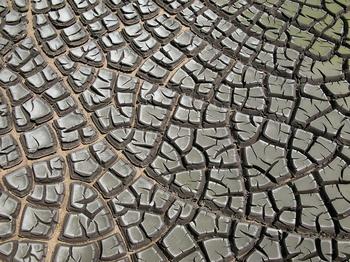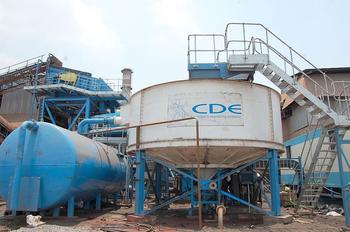Thickening, dewatering and drying
Thickening is carried out in a sedimentation tank or in a sedimentation pond. The latter is advantageous if land area is available, because the sludge can be allowed to settle over a much longer period and a higher solids content of the thickened sludge is achieved. The water removed from thickening needs treatment. It can be returned to the inlet of an off-site wastewater treatment plant, or in the case of sludge from on-site units by an aerobic treatment process.
Dewatering aims to reduce the water content further so that the solids content of the sludge is about 20 % (equivalent to 1 kg dry sludge with 4 L of water). The sludge can then be handled like a solid. Dewatering can be done mechanically using a filter press (employing pressure or vacuum), or a centrifuge. It can also be done using drying beds. A drying bed consists of a 30 cm bed of sand with an under-drainage. Sludge is applied on the sand bed and is allowed to dry by evaporation and drainage of excess water over a period of several weeks depending on climatic conditions.
(UNEP 2000)

